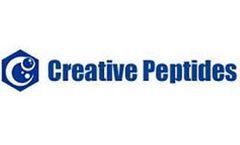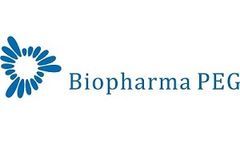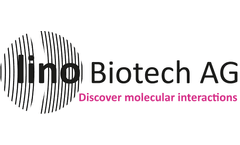Tumor Associated Antigens Articles & Analysis
31 articles found
Alfa Cytology has officially released its antibody-drug conjugates(ADCs) development services which demonstrates the dedication to fighting cancer through advanced treatment methods. Alfa Cytology, which stands at the forefront of oncology service provision in New York United States, has announced its sophisticated antibody-drug conjugates(ADCs) development services for cancer. The pioneering ...
In recent years, the fight against cancer has seen significant advances, particularly with the emergence of targeted therapy. Among the most promising strategies in this domain is the development of radioactive drug conjugates(RDCs). These innovative therapeutic agents combine the targeting capabilities of antibodies with the cytotoxic effects of radioactive isotopes, providing a powerful ...
The monoclonal antibody is designed to bind specifically to cancer cells, ensuring that the toxic drug is delivered directly to the tumor, thereby minimizing damage to healthy cells. This targeted approach enhances the therapeutic index of the drug, resulting in improved efficacy and reduced side effects compared to conventional chemotherapy. ...
Most of the old drugs are currently limited in their effectiveness because of poor pharmacokinetics, simple clearance by the body and cytotoxicity. Nanoparticle technology in particular, Nano drug delivery system is getting a lot of attention and application in medicine in the recent years. Since it is small (1100nm), targets well, and stays in the circulation long enough, NPs are a good ...
Alfa Cytology has introduced its advanced drug development services for brain tumors. Alfa Cytology, celebrated for its cutting-edge biotech solutions and extensive tumor research expertise, has recently introduced brain tumor drug development services, designed to empower researchers in understanding the intricacies and unique challenges ...
Antibody-drug conjugates (ADCs) are a new class of drugs that combine the advantages of both antibodies and small molecule toxins. Compared with traditional cytotoxins, ADCs have the advantages of strong targeting, less toxic side effects, etc. They can accurately target tumor cells, reduce side effects, and improve the therapeutic effect.ADC drugs are mainly composed of monoclonal antibodies, ...
In the environment of cancer, antigens may be specific to tumor cells and are known as tumor-specific antigens (TSAs) or tumor-associated antigens (TAAs). ...
Dr. Kate Sasser from Tempus led a discussion on the potential of antibody-drug conjugates (ADCs), their challenges in targeting tumor antigens, and the future of cancer treatment with Dr. Daniel Johnson, Dr. Funda Meric-Bernstam, and Dr. Kellogg Parsons. The oncology field is rapidly advancing with the development of antibody-drug conjugates (ADCs), offering new hope for ...
ByTempus
Poly(lactic-co-glycolic acid) (PLGA) is a functional polymer organic compound randomly polymerized by lactic acid (PLA) and glycolic acid (PGA). It has been approved by the U.S. Food and Drug Administration It is certified by the Food and Drug Administration (FDA) and is a copolymer material available on the market. PLGA has good biocompatibility, biodegradability, mechanical strength, good ...
What is a Nanobody?Nanobodies are the smallest functional single-domain antibodies known to be able to stably bind to antigens, and have unique structural and functional advantages. The molecular weight of nanobodies is only 12-15 kDa, which retains the antigen binding ability of traditional antibodies. However, nanobodies have higher solubility and stability, and have unique advantages in ...
In humans, MHC is referred to as human leukocyte antigen (HLA).Assessing Epitope Antigenicity and ImmunogenicityThe predicted immunogenicity of peptide epitopes can be analyzed through two in vivo methods: 1) in vivo immunogenicity analysis using HLA transgenic mice; 2) antigenicity testing using human antigen-presenting cells ...
The contemporary sphere of oncological therapeutics has witnessed a phenomenal shift in methodology, pivoting from conventional treatment modalities to exploring and utilizing the power of biological entities, notably viruses. Oncolytic virotherapy stands as an avant-garde dissertation in this evolution. It is predicated on the judicious fabrication of Oncolytic Viruses (OVs), biological entities ...
Therefore, the application range of ADCs containing non-cleavable linkers is limited, and they are mainly used for the treatment of hematological cancers or tumors with high antigen expression.Compared with non-cleavable linkers, cleavable linkers use specific conditions to release drugs at target cells. ...
Structurally, an ADC consists of monoclonal antibodies (Antibody) that target specific antigens on tumor surfaces, cytotoxic drugs (drugs) that kill tumor cells, and linkers (Conjugate/ linkers) that conjugate cytotoxic drugs to antibodies. The link between the antibody and linker is controlled by the coupling method, which determines the DAR value of the drug and affects the stability and PK ...
Targets can be divided into tumor-specific antigens (TSA) and tumor-associated antigens (TAA) according to their expression. Antigens that are only expressed in tumor cells but not in normal cells are tumor-specific antigens and the most ideal ...
In the search for innovative and effective ways to target cancer, we are faced with more than just a challenging problem; we are faced with our own cells as opponents. Cancer cells evolve to achieve an optimum of physical fitness, giving them an array of abilities that no cell should possess in a healthy organism. One way to find novel therapies against cancer therefore could imply finding a ...
Currently, ADC has played a significant role in the treatment of some malignant tumors, such as trastuzumab in the treatment of breast cancer, but its application in the treatment of prostate cancer (PCa) progress slowly. In recent years, ADC has made rapid progress in the treatment of metastatic castration-resistant prostate cancer (mCRPC). STEAP1, TROP2, PSMA, CD46, and B7-H3 are currently ...
Mesothelioma and ovarian cancer have the highest expression of mesothelin, and higher expression is associated with advanced tumor stage and higher metastasis rate. In stage IV colorectal cancer, high mesothelin expression is directly associated with chemotherapy resistance, aggressiveness, and poor prognosis. In contrast, the data from ...
Circular RNAs are closed-loop single-stranded RNA (ssRNA) that are structurally specific, and produced by the back-splicing process. CircRNAs can exist independently of proteins and are unaffected by exonucleases, and are widely found in plant and animal cells to regulate gene expression. Circular RNAs were first discovered by Sanger studying virus-like RNAs. And in 1991, Nigro stumbled upon an ...
Chimeric antigen receptor T cells (CAR-T) and T cell antigen receptor chimeric T cells (TCR-T) are currently the "top stream" in adoptive T cell tumor immunotherapy. ...












